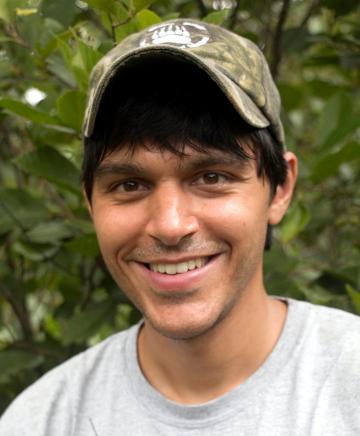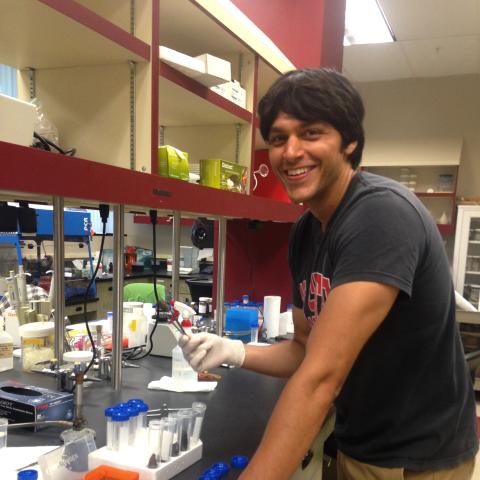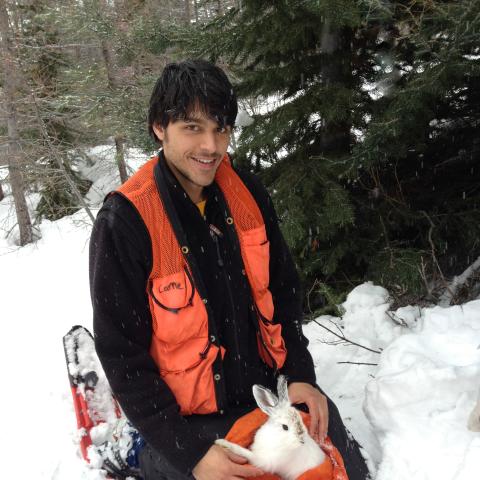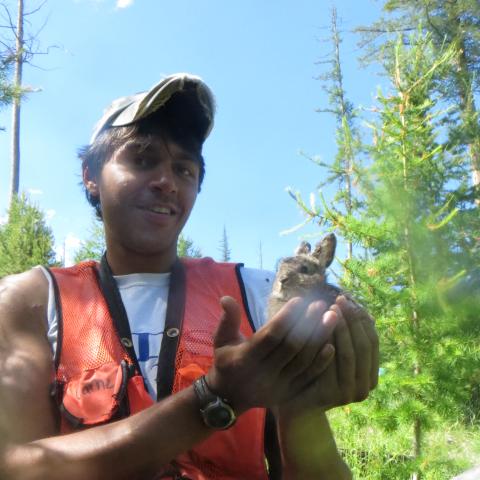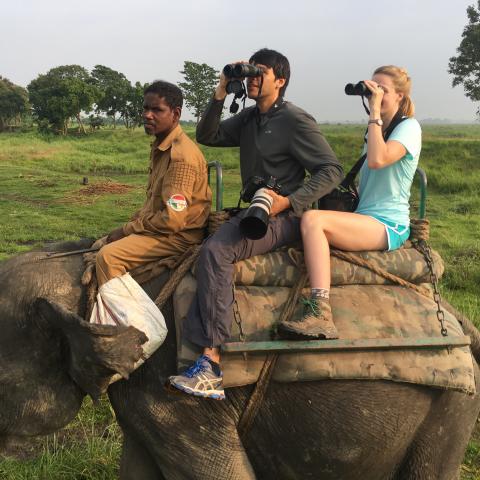High School
North Andover High School, North Andover, MA, 2007Undergraduate Education
B.S. in Biological Sciences and Natural Resources from Cornell University, 2011Graduate Education
Ph.D. Candidate in Wildlife Biology, University of Montana (2016 - present); M.S. in Fisheries Wildlife and Conservation Biology, North Carolina State University, 2015Profile
Take a species like the snowshoe hare that undergoes seasonal coat color molts from brown to white to camouflage itself against winter’s snow. Add in a reduction in days with snow cover due to climate change. Then picture fluffy white hares bounding around against a snowless brown backdrop with hungry lynx nearby. It sounds like endgame for the hare.
“If you care about hares, it’s cause for concern. And even though it seems great for the lynx, it’s not that simple. If lynx experience a population boom due to an abundance of easy prey, they could overeat the hares and run out of food, causing their numbers to plummet. And the hares could surprise us all by breeding with populations that remain brown year-round, allowing them to track the changing environment. As we have begun to learn, evolution sometimes occurs rapidly, in just a few generations. The truth is, we just don’t know yet.” And with that, Alex Kumar shares some of the basis for his fascination with the snowshoe hare, the lynx, and other cyclic species.
A native of North Andover, Massachusetts and a Ph.D. candidate in Wildlife Biology at the University of Montana, Alex is interested in the effects of anthropogenic stressors like climate change and habitat loss on animal populations. “It can be difficult to quantify not only animal population numbers, but also the impact of multiple stressors on those populations. My research brings together multiple drivers of abundance among cyclic species into a unified model. Although I am focused on the snowshoe hare, I hope that my research helps inform habitat management for other cyclic species, including even plague species like the gypsy moth.”
After briefly considering a career as a wildlife photographer, Alex enrolled at Cornell as a biology major, seeking a discipline that offered more of a quantitative challenge. Conversations with professors encouraged him to pursue wildlife research. “At this point I’m most interested in research that can be directly applied to the conservation and management of threatened species,” says Alex.
Although his present work is based in Montana, Alex’s interests have taken him as far away as Kenya, Bhutan, and India, where in 2015 he analyzed data on his favorite animal, the tiger, and two years later when he returned to implement a workshop on Asian elephant research and conservation. “I’m amazed at how much can be accomplished through passion and commitment, even with limited resources,” he reflects. “It really gives me hope for the future of wildlife on our planet.”
As he focuses on completing his dissertation, Alex has this advice for those interested in conservation work: “Don’t limit your path to one organism or one question. Be curious. Find people who support your interests. When I enrolled at Cornell I was majoring in Biology taking lots of pre-med classes. I took an elective on natural resources with a faculty member who convinced me to double major in Biology and Natural Resources. That support helped me understand how the hard sciences apply to conservation, which is how I got to where I am today.”
To learn more about Alex’s research and his travels, visit his website.
